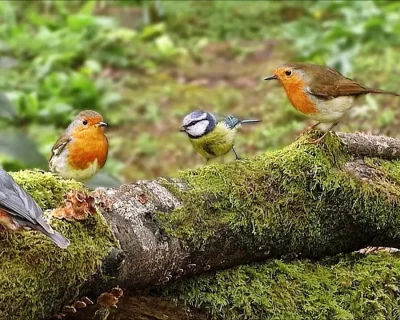Tarangire National Park is Tanzania’s sixth largest park, but it remains one of those destinations that visitors only briefly stop at (if at all they do). This is mainly due to the more popular and more extensive parks like Manyara and Ngorongoro, that dominate the main safari route in Tanzania. Unbeknownst to them, tourists who barely give a second glance at the Tarangire turn-off are missing possibly the wildest park on the northern circuit of Tanzania. The giants of the animal and plant kingdoms — Elephants and ancient baobab trees — are the defining characteristics of Tarangire. If you are looking for an off-the-beaten-path destination in Tanzania, then Tarangire National Park is definitely the place to be. Here’s why:
1. Game Drives Through Abundant Wildlife
Naturally, spotting wildlife is the reason most people plan a safari adventure. After all, it is an experience unlike any other, to see animals freely roaming in their own habitat. That’s why you’ll be pleased to know that Tarangire has the largest population of elephants across northern Tanzania. There are also large numbers of zebras, giraffes, water buffalo, generuks, warthogs, as well as large predators like lions, leopards, and hyenas. If you time your travel to coincide with the dry season (June to October), you’ll be able to see the bountiful abundance of wildlife. This is because the Tarangire River is the only permanent source of water in the area, so they pretty much flock there all day long.
2. Bird Watching
Tarangire National Park is home to over 500 species of birds, some of which are endemic to that region alone. Some less than common birds at the park include; bateleurs eagles, Yellow-collared lover birds, hornbill, helmeted Guinea fowl, Kori bustards, pennant-winged nightjars, brown parrots, striped swallows and gigantic lappet-faced vultures among many others. The best bird viewing places are at the acacia glades, swamps and near the Tarangire River.
3. Amazing Scenery
Along with the exciting prospect of enjoying close encounters with wildlife, taking in Tarangire’s mesmerizing scenery is an experience in itself. Picture around 500 square miles of woodlands, swamps and anthill-dotted plains, while majestic baobab trees gloriously dot the landscape. Walking or driving through the undulating savannah plains makes you feel like you are in a picture-perfect African landscape. Meaning, your camera will be busy clicking away for sure.
4. Nature Guided Walks
Guided walks through nature are one of the best ways to truly live the safari experience. Visit the park’s top attractions, explore the vast wilderness on foot, and bask in the cool refreshing African breeze. These nature guided walks are usually done in the morning and evening time, just in time to witness the famed African sunrise/sunset. The activity lasts around one to three hours, and an experienced tour guide will accompany you.
5. Space and Privacy
Since Tarangire is not usually a regular on the main safari route, it is for the most part, not as crowded as other parks like the Serengeti and Ngorongoro. If you’re lucky, you may not see any other vehicles for hours as you explore different areas of the park. That feeling of being alone in the wilderness in a private African safari tent is priceless. It makes your one-on-one with mother nature more intimate and makes for a more fulfilling safari experience. You could be having lunch while watching elephants drenching themselves in the water while several giraffes take shade from the harsh sun. This view is only complemented by the sounds of distant roars and high-pitched bird calls.
6. Cultural Visits
Tarangire National Park is located not too far away from the Masai steep. So if you are interested in experiencing a cultural safari, you can visit the local Masai people. This is a famous tribe of nomadic pastoralists who you have most likely seen in postcards and images of Tanzania’s local tribes. You’ll recognize them by their flowing red and orange robes. In some cases, they even perform their spectacular jumping dance as a way of welcoming visitors. While there, you will witness another side of life, outside of the boundaries of modern civilization. You can support the locals by purchasing their crafts as cherished mementos of your time in the African bush.
7. Budget-Friendly Option
If you don’t have the budget for a safari trip in the Serengeti or Lake Manyara or Ngorongoro Crater, then Tarangire is definitely the place to go. During peak season, costs for these famous national parks are usually through the roof for an average traveler, so why not go for something cheaper. The sightings are even more impressive since, during the dry season, thousands of animals from the Masai steppe are flocking to the Tarangire River. In fact, late in the dry season, the park hosts the highest density of wildlife compared to just about anywhere on the whole continent.
8. Time
Tarangire can cater to not just your budget, but your time and travel needs. It is one of those parks you go for when the other popular parks are citing long waitlists and limited accommodation options. It is also an excellent itinerary inclusion, like a part of a much bigger Tanzania tour. For instance, you could spend two days doing game drives from dawn. On the third day, you’re already back at Arusha preparing to climb Mount Kilimanjaro. This saves you valuable time to savor exciting experiences and your knowledge of the local areas. After all, it’s not every day you get to hop from one series of natural wonders to the next in a couple of days. Might as well use the time to enjoy every bit of it.
With all these benefits, Tarangire National Park surely deserves a spot on your destination list. You can easily access the park by road or air. If you’re going by way, the distance is about 114 km from Arusha town, so that’s less than 2 hours. While the main roads are drivable year-round, the streets in the river valley and on the flood plains may be hard to pass during the rainy season. For flights, some private airline companies, like Coastal, offer daily flights to Tarangire from Arusha, Dar Es Salaam, Serengeti, and Ruaha. Alternatively, you can fly to Arusha and complete the rest of the trip by road. Contact us today to talk about your Tanzanian safari plans.





